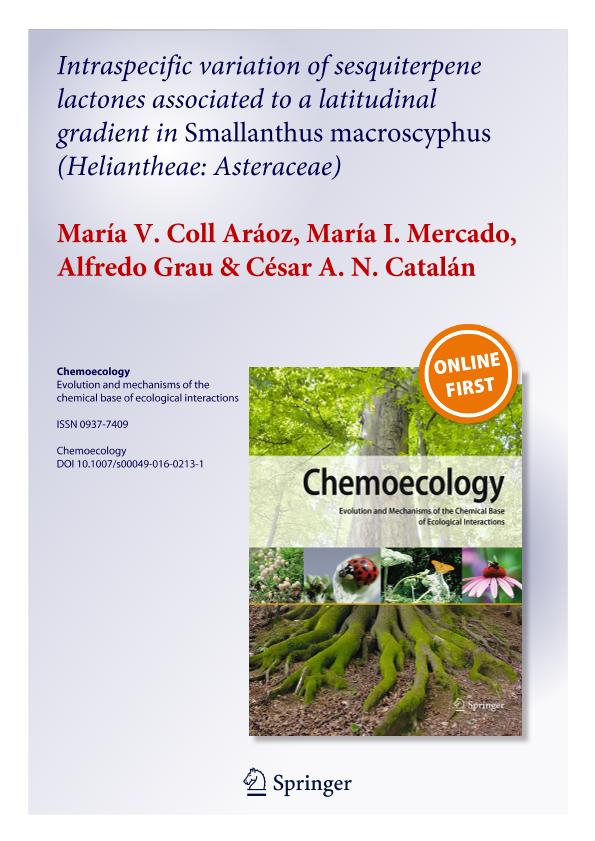Artículo
Intraspecific variation of sesquiterpene lactones associated to a latitudinal gradient in Smallanthus macroscyphus (Heliantheae: Asteraceae)
Fecha de publicación:
08/2016
Editorial:
Birkhauser Verlag Ag
Revista:
Chemoecology
ISSN:
0937-7409
Idioma:
Inglés
Tipo de recurso:
Artículo publicado
Clasificación temática:
Resumen
According to theory, variation in plant secondary metabolism against herbivores is driven by variation in biotic and abiotic conditions interacting with plants genotype to determine the expression of resistance traits. Particularly, it has been long postulated that plants growing along latitudinal gradients experience changes in biotic and abiotic interactions, specifically leading to a decrease of plant toxicity towards the poles. We tested this hypothesis using the asteraceous species Smallanthus macroscyphus. Smallanthus species are known to contain sesquiterpene lactones (STLs), bitter compounds with a broad spectrum of biological activities, including deterrence to herbivores. S. macroscyphus showed a decrease in chemical diversity of STLs when investigating populations growing from the tropical regions to less tropical ones. Populations from lower latitudes were found to be more chemically diverse with enhydrin, uvedalin and fluctuanin as main components, while populations southward were chemically fairly uniform, with polymatin A as the main and largely dominant STL. The STL chemistry of S. macroscyphus is in agreement with the hypothesis that plants of tropical forests have a greater diversity of secondary metabolites when compared to their temperate counterparts.
Archivos asociados
Licencia
Identificadores
Colecciones
Articulos(PROIMI)
Articulos de PLANTA PILOTO DE PROC.IND.MICROBIOLOGICOS (I)
Articulos de PLANTA PILOTO DE PROC.IND.MICROBIOLOGICOS (I)
Citación
Coll Araoz, Maria Victoria; Mercado, Maria Ines; Grau, Alfredo; Catalan, Cesar Atilio Nazareno; Intraspecific variation of sesquiterpene lactones associated to a latitudinal gradient in Smallanthus macroscyphus (Heliantheae: Asteraceae); Birkhauser Verlag Ag; Chemoecology; 26; 4; 8-2016; 143-151
Compartir
Altmétricas




